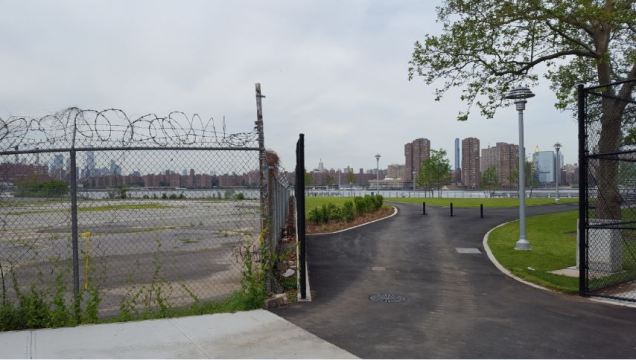The southernmost point in New York City and state is the neighborhood of Tottenville on Staten Island. At the tip is the 286-acre Conference House Park, which needs no introduction. A couple of blocks north of it is another park that lines the shore of Arthur Kill, a wild landscape of a seashell-covered beach, ravine, and thick tree cover.

At only nine acres, Tottenville Shore Park is a nature preserve that also serves as a miniature bluebelt that collects runoff from nearby streets and channels it into the ocean, reducing the burden on the sewer system.


